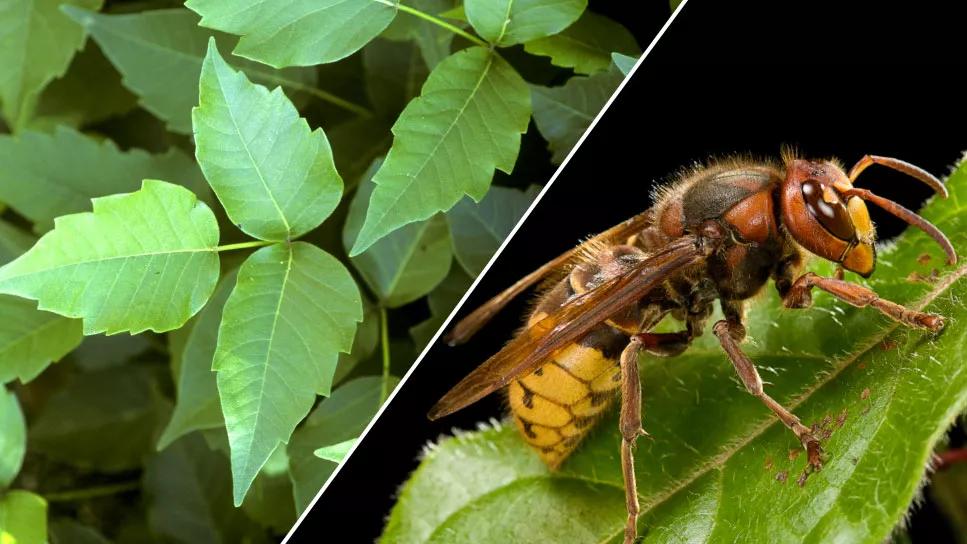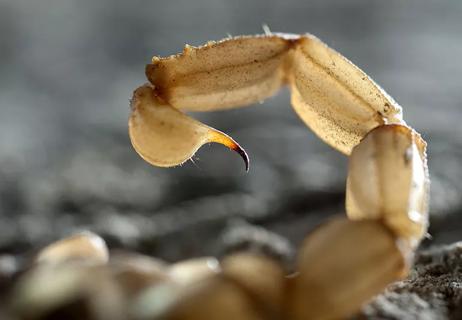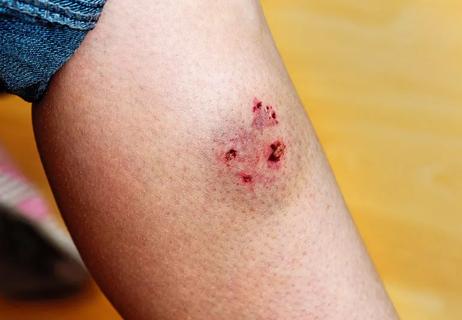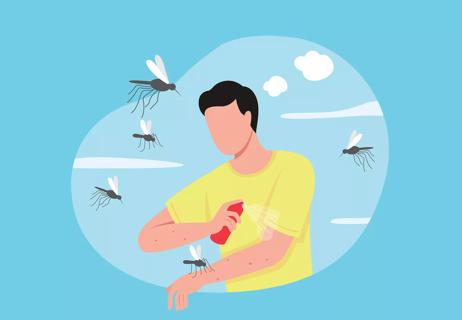Poisons are inhaled, ingested or absorbed by your skin, while venoms are delivered by bites and stings

The great outdoors is full of beauty and opportunity. Whether you’re heading out on a hike, planning a camping trip or looking forward to some gardening, spending time outside feels good. And getting out in nature can even benefit your mind and body.
Advertisement
Cleveland Clinic is a non-profit academic medical center. Advertising on our site helps support our mission. We do not endorse non-Cleveland Clinic products or services. Policy
But for all its benefits, nature can also pose risks. The natural world is home to plants and animals that have evolved to protect themselves from predators with all kinds of defenses.
Among them, poisons and venoms that can be dangerous, even life-threatening, to anyone who comes in contact with them. Including you, your kids and your pets.
Learning the difference between poison vs. venom is a good first step to keeping yourself safe out there.
“Some people will use ‘poison’ and ‘venom’ interchangeably,” says critical care physician Aanchal Kapoor, MD. “But there are big differences between these two kinds of toxins in terms of their biochemical makeup, how they’re delivered and how they affect you.”
Poison and venom are two kinds of toxins. That means they’re substances that cause damage to living things.
There’s no shortage of toxic substances that we encounter regularly in our lives.
There are toxins in our environment, including things like contaminated air, certain kinds of plastic and even some detergents.
People use the word “toxic” in other ways, too. For example, having a buildup of certain vitamins in your body is called vitamin toxicity. Or you may even consider your workplace a toxic environment if it’s detrimental to your well-being.
Advertisement
Certain plants and animals produce toxic substances. Those toxins come in the form of poisons and venoms. And they can be dangerous, even deadly.
“Poisons and venoms produced by plants and animals can serve two different purposes,” Dr. Kapoor notes. “They can be used primarily as defense mechanisms to protect themselves from a threat. Or they’re used to stun prey when they’re hunting.”
Dr. Kapoor shares what it means for plants and animals to be poisonous vs. venomous, and how you can keep yourself safe from them.
Poisonous plants and animals contain substances that are dangerous to your body if they’re ingested, inhaled or otherwise enter your body passively. Some poisons can be transferred just by touching your skin.
In other words, poisons cause damage by first being absorbed by your cells and then entering your bloodstream.
One of the best-known examples of a natural poison is poison ivy. Just touching poison ivy can cause you to break out in an itchy rash. It can also cause swelling and blisters.
Some plants can also be poisonous if they’re eaten. Deadly nightshade berries (Atropa Belladonna), for example, can be fatal to children, adults and pets alike. In fact, many people believe it was a potion made with deadly nightshade that Shakespeare’s Romeo took when he thought his beloved Juliet had died.
Animals can also be poisonous. For example, the golden poison frog lives in the tropical forests of Central and South America. It secretes poisonous chemicals from its skin. Just touching one can cause toxins from its skin to seep into your body and be dangerous, even deadly.
But poisons aren’t relegated to the natural world. Some household products, like cleaning solutions, pesticides, antifreeze and mothballs contain poisonous chemicals. They can make you ill if ingested.
Keep these products out of reach of kids and pets. And follow warnings on their label regarding proper safety. That may include things like wearing a mask or gloves and working with them only in well-ventilated areas.
Unlike poisons, which need to be absorbed by your body, venom is delivered directly into your bloodstream. Venoms are delivered by something like a bite, sting or scratch that breaks your skin.
“Poisons need to have direct contact with skin or enter your body through your mouth or nose. But venoms are transferred by causing the skin to break down and injecting the substance directly into the bloodstream,” Dr. Kapoor clarifies.
A single bite from the venomous king cobra, for example, delivers enough toxin to kill 20 people.
Advertisement
Bees, wasps, hornets and other stinging insects are also venomous. Their sting transfers a dose of a chemical that causes pain, throbbing and redness.
And venom isn’t reserved for members of the animal kingdom. Though most plants are much more likely to be poisonous than venomous, some plants can deliver venom.
Some spiky plants, like stinging nettle, deliver toxins through their needles. A scratch from a stinging nettle thorn can deliver venom into your blood that can cause a painful, burning or itching rash.
When it comes to poison vs. venom, it’s not that one is necessarily more dangerous than the other. How dangerous they are depends on the chemical makeup of the toxin and the quantity of the toxin that enters your body.
“The dangers of venoms and poisons depend on the molecular pathways in the body they are affecting,” Dr. Kapoor explains. “Some may be toxic to the heart, causing immediate death, or toxic to the brain, causing paralysis. The danger depends on the amount of toxin delivered, as well as the mechanism of action.”
Rule No. 1 in staying safe from natural toxins is to do your research ahead of time, Dr. Kapoor advises. “Especially if you’re traveling to a new place with unknown risks, it’s important to understand the inhabitants of that area. What are the common animals and plants there? What are their dangers? How do you identify them?”
Advertisement
Other practical advice for protecting yourself in nature:
If you believe you’ve been in contact with a dangerous natural poison or have been wounded by a venomous creature, don’t delay treatment.
Start by washing and cleaning the area. Check for signs of swelling, and remove any jewelry like watches, bracelets or rings in case swelling progresses.
“Mark the affected area with a pen by drawing a circle around the area,” Dr. Kapoor instructs. “Then, check on the area frequently to see if any skin-related symptoms, like redness or blisters, are progressing.”
Seek emergency care if you notice changes in your skin around the affected area, or if you experience symptoms like:
Advertisement
Contact poison control online (poison.org) or at 1.800.222.1222 (in the United States) for advice if you have any worries. They can advise you on whether emergency treatment is needed or advise you on how to monitor and treat your symptoms on your own.
Treatment procedures will vary depending on the toxin you’ve been exposed to and the severity of your symptoms. You may need IV fluids, anti-inflammatory medications, antivenom injections or other measures to clear your body of toxins.
Get out there and enjoy the great outdoors! But respect the threat that some plants and animals can pose to your well-being. Plan ahead. Know the risks. And seek medical treatment when needed.
Learn more about our editorial process.
Advertisement

The risk of infection makes fast and thorough treatment critical

This persistent myth isn’t true and can actually cause more pain than relief

An urgent care physician weighs in on what to do

Infection is the biggest danger

Several conditions, like vitiligo and fungal infection, can cause a loss of pigmentation, leading to white spots or patches on your skin

Making a health plan with your doctor before you leave will make it easier to sit back and enjoy your flight

Keep ‘mozzies’ at bay by avoiding scented body products, beer and certain colored clothes

Ultimately, rice is safe to eat, but the type, where it’s grown and how you cook it may be factors to consider

Babies can get congested easily, but you can calm their cough by keeping them hydrated, using nasal drops and running a humidifier

Weight loss may cause loose, sagging skin and muscle loss to your rear

Several conditions, like vitiligo and fungal infection, can cause a loss of pigmentation, leading to white spots or patches on your skin